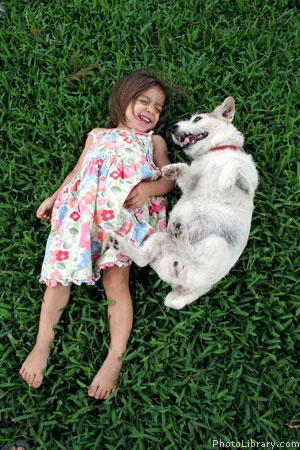We have much more to do and your continued support is needed now more than ever.
Let Your Dog Be Your Nature Guide
Guest post by Jennifer Bové
 We all need to get our Green Hour, and if you’re a dog owner like me, you have the perfect excuse. Dogs are always excited about going outside, so they make great hiking companions. And as they scout and sniff everything along the way, you’ll find yourself noticing more about the natural world than you might have discovered on your own.
We all need to get our Green Hour, and if you’re a dog owner like me, you have the perfect excuse. Dogs are always excited about going outside, so they make great hiking companions. And as they scout and sniff everything along the way, you’ll find yourself noticing more about the natural world than you might have discovered on your own.
Before you take to the trail—or even just the sidewalk—find out how to make the most of your outing:
Follow the Leader
Since dogs love to lead with their keen canine noses, following them can feel a lot like tagging along on a scavenger hunt. But what are they “seeing” with their noses? Your dog’s curious cues might just tune you in to local wildlife activities. Here are a few tips to interpret canine signals:
1. If your dog sniffs the base of a tree, look for a squirrel or other animal in the branches above.
2. Along the edges of mud puddles and creek banks, your dog may lead you to tracks recently made by wild paws or hooves. Carry a reference book, such as this kids’ Take Along Guide or this Peterson Guide for adults to help identify the tracks.
3. It may sound gross, but dogs are fascinated by other creatures’ poop, so why not follow suit? Naturalists examine animal scat (droppings) all the time because they tell you a lot:
- Bits of seeds, berries, and other plant material indicate the animal was an herbivore (plant-eater) or possibly an opportunistic omnivore, such as a bear or raccoon.
- Fur-, bone-, or feather-filled scat was left by a carnivore.
- Does the scat appear moist? That usually means the animal left it recently.
4. Your dog may lead you to low-lying bird nests, dens, trees gnawed by beavers, or saplings rubbed by deer antlers. It’s OK for the dog to be curious; just make sure it doesn’t disturb or harm any wild animals—or their homes.
5. If your dog perks its ears, or barks, or the hairs on its back stand on end, it may sense the presence of an animal or human. In this way, dogs can alert us to potential dangers—or just to a cute chipmunk!
Sharing the Trail: Dog-Walking Etiquette
1. Pack the leash: It’s critical to keep your dog on a leash, whether you’re walking city streets or back-country trails. Here’s why:
- Loose dogs can pose a threat (or at least a big inconvenience) to other hikers or walkers who may have children or dogs of their own.
- Unleashed dogs are likely to chase and harass wildlife. Even when a dog doesn’t directly injure an animal, the stress of being hounded can lead to exhaustion and vulnerability to other predators. A dog owner can even be charged with a civil offense in cases of wildlife harassment.
Avoid these situations by keeping your dog on a retractable leash, which allows you to keep your dog close when needed and also offers more freedom when the coast is clear.
2. Check the rules: It’s a good idea to verify that dogs are permitted on trails you’re hoping to hike. Many national and state parks don’t allow dogs on trails at all. Visit HikeWithYourDog.com to locate trails for you and your dog throughout North America.
3. Keep it clean: Another cardinal rule of dog-walking involves clean-up. Nobody wants to encounter dog piles while enjoying a nature walk, so we must each do our part to dispose of droppings in a sanitary fashion.
More more tips for enjoying the outdoors with your pup, check out Create a Dog-Friendly Garden!
Jennifer Bové, mom and former field biologist, is an award-winning contributor to Your Big Backyard®and the editor of three anthologies including Wild With Child: Adventures of Families in the Great Outdoors. Jennifer’s blog is filled with timely tips and family fun. Stop by for a visit at www.bovesboots.blogspot.com.





















